To finalize our Post-Pandemic Office blog series, we are featuring Steelcase’s guide to ‘The New Hybrid Neighborhood’ to assist organizations and investors in transforming their commercial offices into thriving spaces that earn people’s commute. We have provided photos of Linville Team Partners’ office space in downtown Winston-Salem and local projects we’ve had a hand in as visual demonstrations.
A workplace worth the commute
Despite employers’ best efforts to entice everyone back to the office with free snacks and fun events, people are dragging their feet. Their reluctance isn’t about COVID: If you look at the data, far more people have been to a restaurant, movie theater, or traveled on an airplane than people have gone to the office, according to the Kastle Back to Work Barometer. People’s resistance doesn’t seem to be about flexible work either. Hybrid work has been embraced by 71% of global leaders, giving people the option to work two-to-three days from home or other locations.
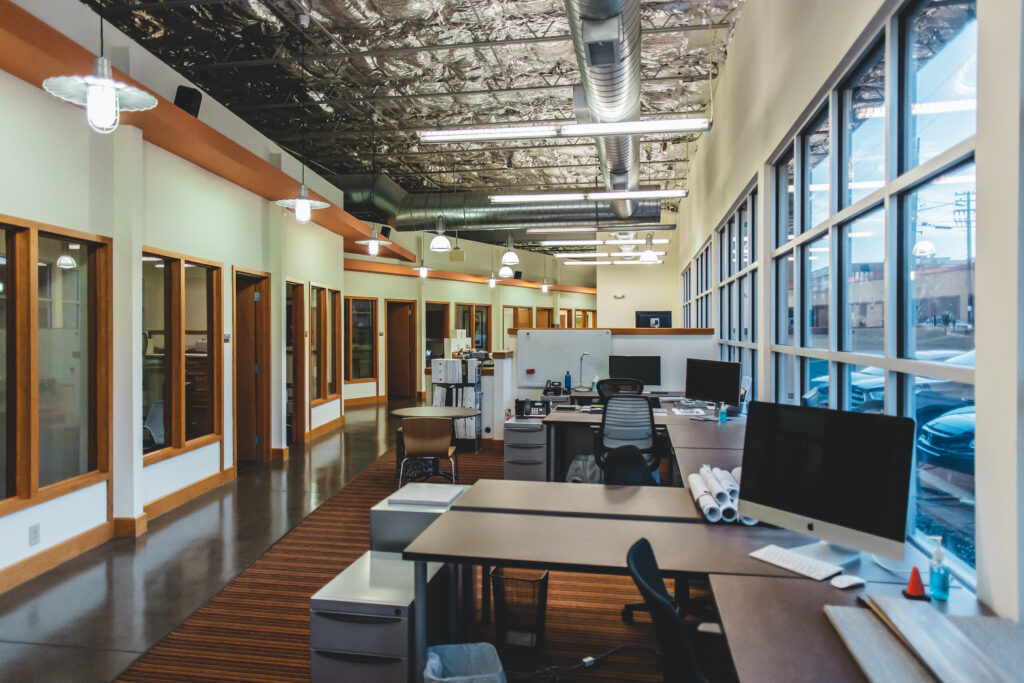
Theories about why workers are hesitant to return to the office range from the dread of wearing work clothes to long commutes. But maybe the most obvious reason is being overlooked: Do people believe anything has changed if everything looks the same?
In offices worldwide, organizations have adopted hybrid work policies but haven’t changed their offices to support the new realities of hybrid work. Some say they will wait until employees are back in the office to make changes. But hybrid work means people will come and go at different times and, without changes, the office is often likely to feel empty and lack energy. Hybrid work also means people will spend much more time on video calls and look for more privacy to meet with remote teammates. Or worse, they’ll do video meetings in the open and become the hybrid version of the loud office talker. After two years of isolation, who wants that?
Hybrid work policies will work better if an organization’s space changes in tandem.
The new era of hybrid work means people will have choices about where to work, and, in many ways, the office has to work even harder to attract people and keep them coming back. Offices will need to earn people’s commute by meeting a new set of needs: support hybrid work, establish connections, create a sense of belonging, and promote wellbeing — all of which suffered during the pandemic.
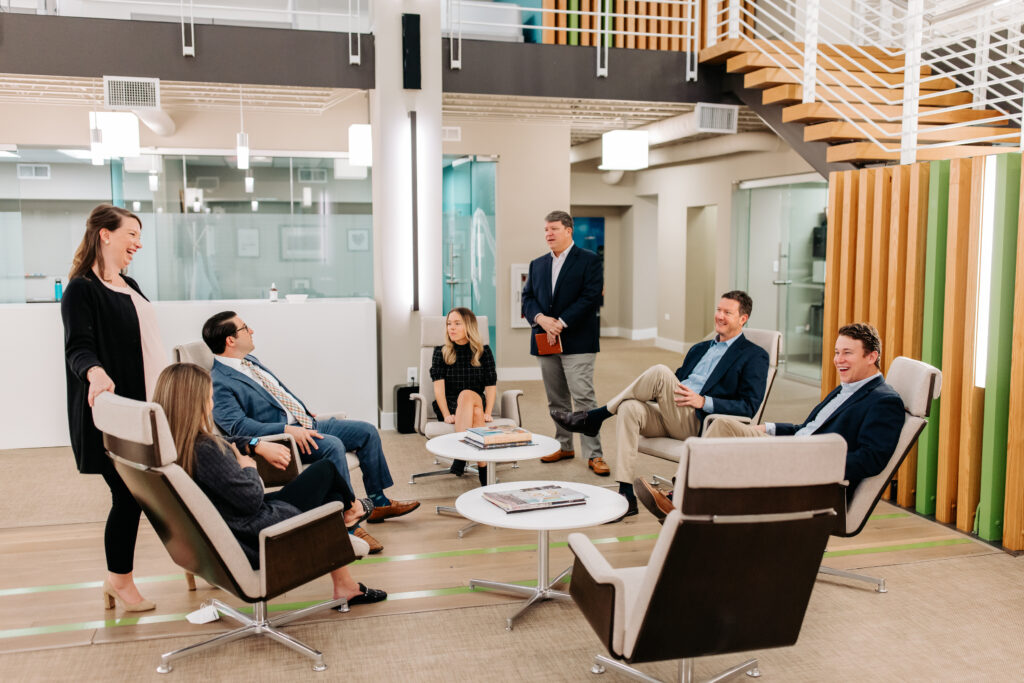
A NEW INSPIRATION
New inspiration for office design requires a shakeup in thinking about the future of the office. Rather than basing office design on the need to fit more people into less space, the workplace should draw inspiration from another source that is less about efficiency and more about humanity — the vibrant communities in which we live. Jane Jacobs, author of “The Death and Life of Great American Cities,” argued decades ago that people need diverse neighborhoods to thrive, where homes, bustling sidewalks, shops, parks, and public spaces come together and “exist in extraordinary variety.”
WHY NEIGHBORHOODS?
Neighborhoods exude vitality and energy — nothing is static — places and activities adapt and change. The neighborhood is where people form relationships, feel a sense of belonging, and build trust.
Today, organizational psychologist and author Adam Grant agrees. “A better vision for a workplace is a community — a place where people bond around shared values, feel valued as human beings, and have a voice in decisions that affect them,” says Grant. The best neighborhoods foster inclusion and exude personality, are where ideas are born and trends are launched.
This neighborhood community is what people at work need more than ever before.
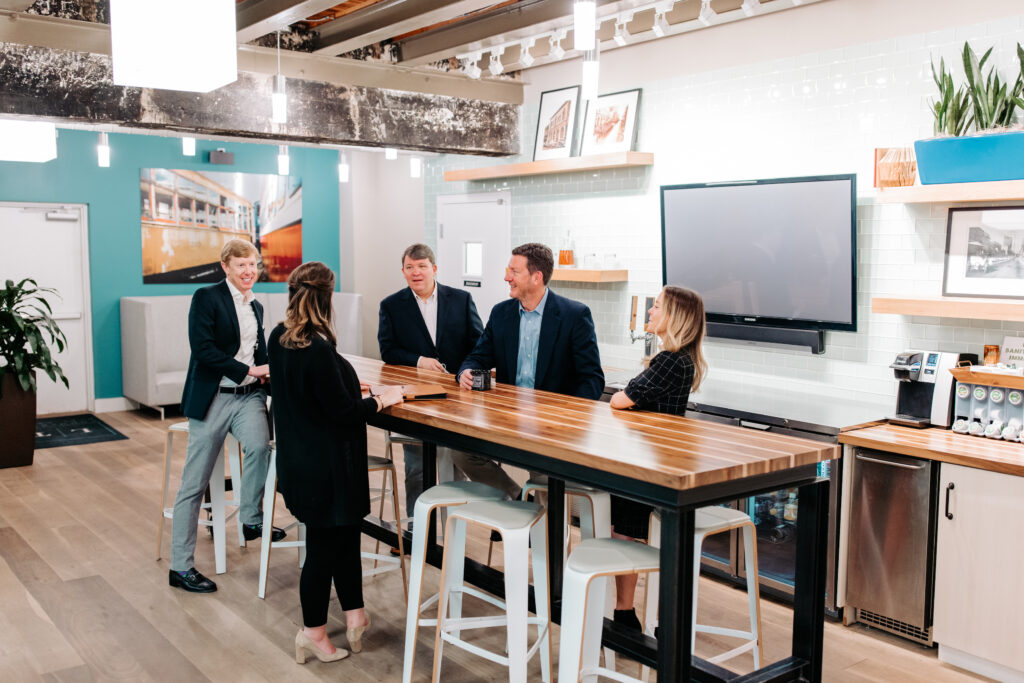
BUILDING A NEIGHBORHOOD AT WORK
Organizations can create diverse neighborhoods in their workplace as a tangible way to communicate their values and shift their culture. The workplace can make the same energy and connection people feel sitting in a sidewalk cafe or the same level of solitude they experience in their library or the privacy of their home.
Neighborhoods at work, similar to the ones people live in, are a home base for people and teams, departments, or project teams. They include a variety of interconnected spaces that support different types of work, a mixture of uses, and the natural flow from one to another. They include:
- Individual space assigned to one person or shared amongst the team
- Collaboration spaces for in-person and virtual interactions that support the different ways people need to come together
- Places with appropriate privacy for individual heads-down work or finding solitude and rejuvenation
- Areas to gather, socialize and learn with teammates
Neighborhoods become a destination where people feel comfort and confidence; they can find their teammates and the tools they need to do their work.
For a neighborhood to truly work for people, its basis must be on a fundamentally new employee experience.
A Framework for Employee Experiences
Equity: Create a more equitable and inclusive experience for all participants, with a design goal to eliminate the gap between co-located and remote employees.
Engagement: Design settings for a range of experiences that help people participate fully, focus intensely, and stay in flow longer.
Ease: Design various intuitive virtual and physical experiences that are easy to navigate and control.
4 KEY DESIGN PRINCIPLES
Every neighborhood has a distinctive character — four fundamental design principles guide their creation.
- Me + We
Like city neighborhoods have homes and shared spaces, the new neighborhood at work supports individual work and teamwork. They help people make quick shifts and give people more options and autonomy over their day. The amount of space for each will vary, but they support different types of work throughout the day.
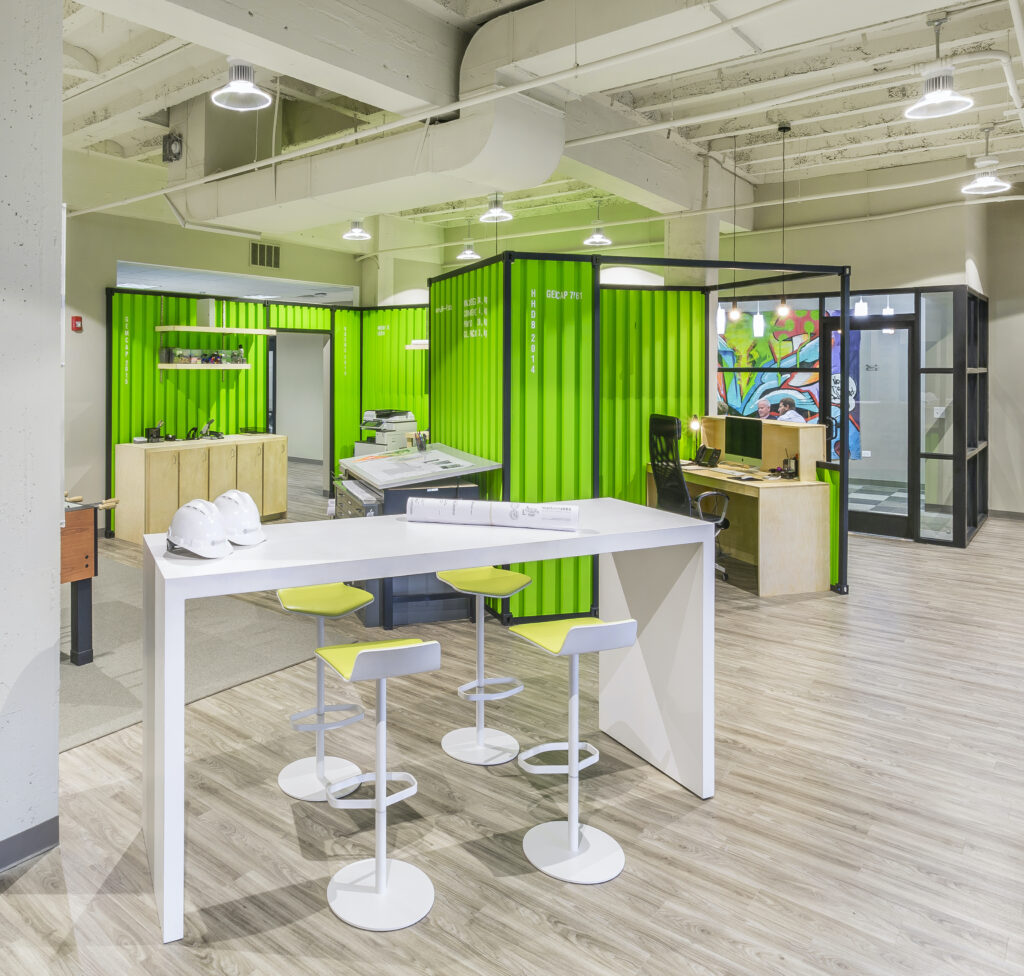
- Fixed-to-Fluid
Great neighborhoods evolve when new people move in or a new store opens. At work, change is constant, sometimes in small ways as teams need to add more people or in significant ways when they need more collaboration spaces. A hybrid neighborhood is modular and flexible — embracing change instead of resisting it
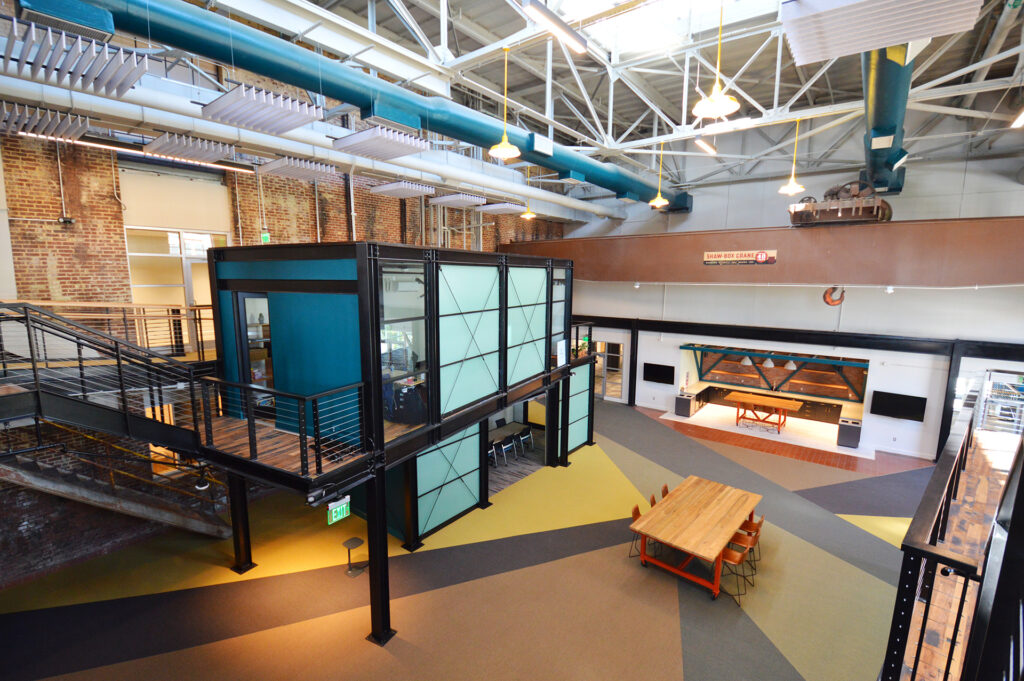
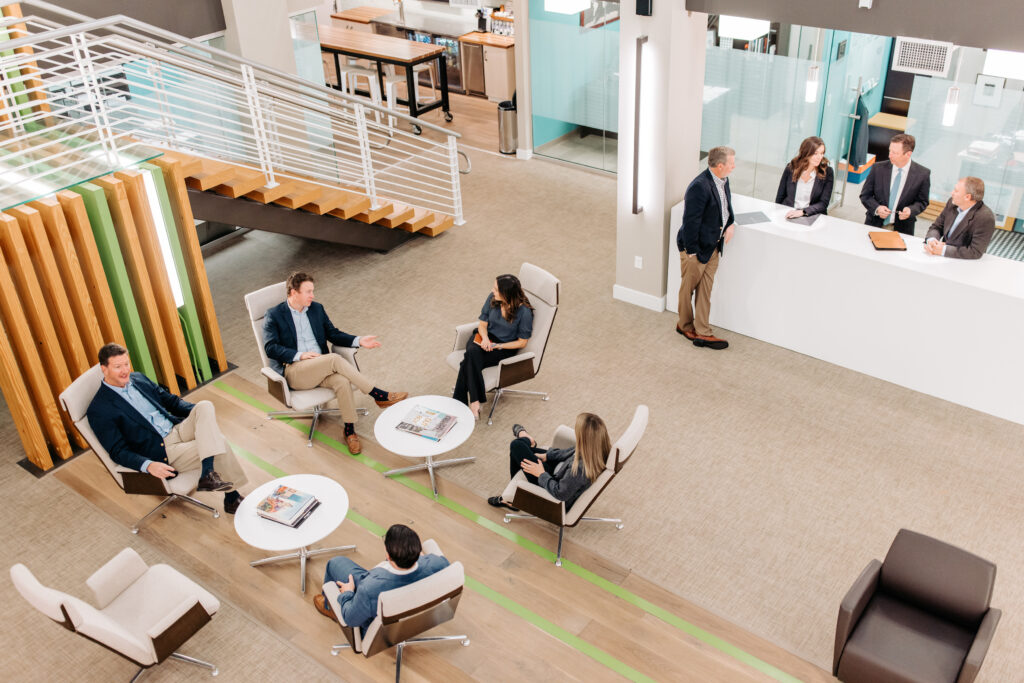
- Open + Enclosed
Great neighborhoods blend private and public spaces, making the new office diverse and dynamic. Privacy has become even more critical during the pandemic—people who struggled with significantly open office plans before the pandemic are even more sensitive to the need for control over their privacy after working from home.
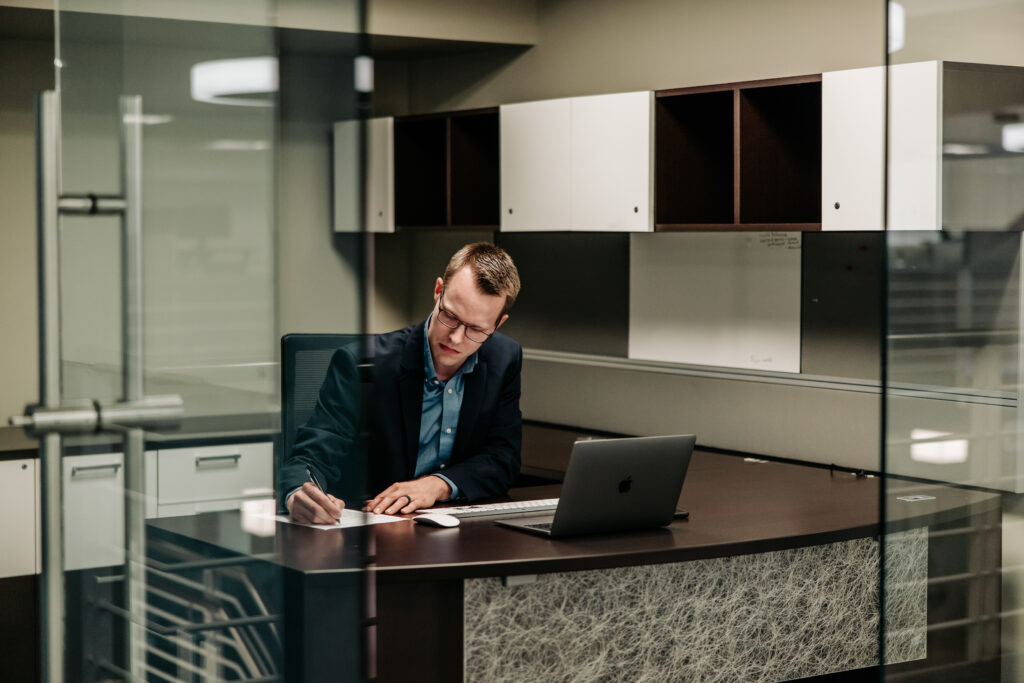
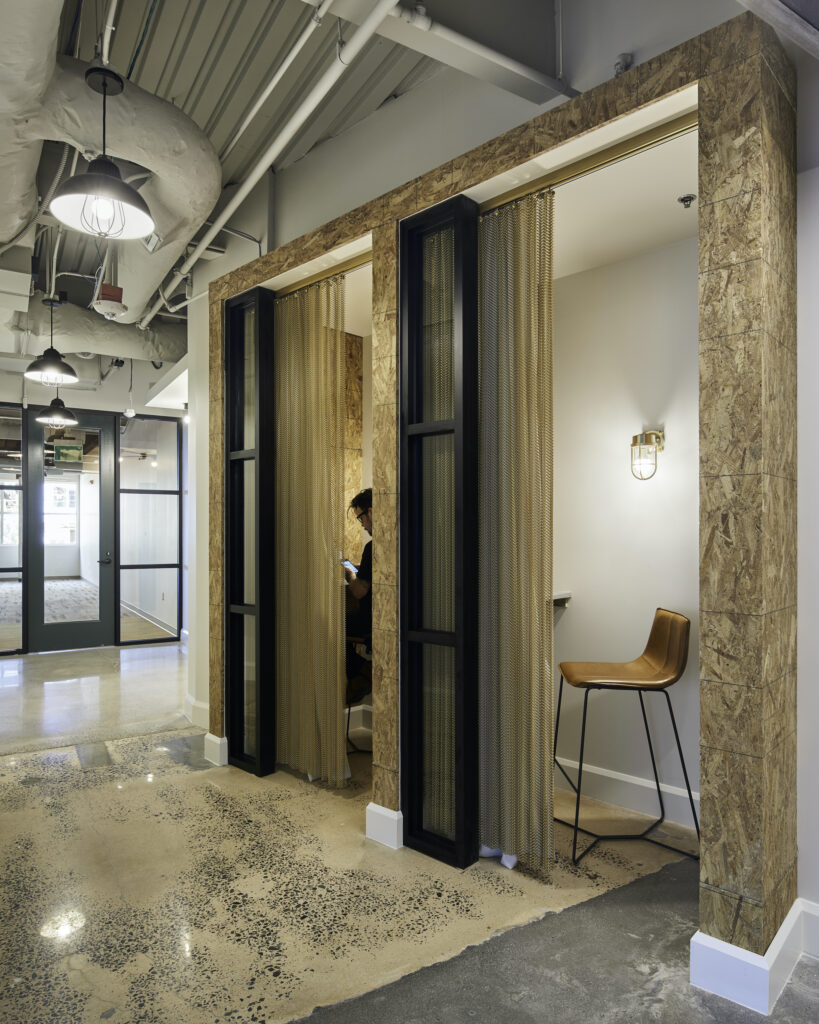
- Braiding Digital + Physical
Urban planners are creating smart cities, and hybrid office neighborhoods must do the same. Video meetings are a new norm in the office; everyone involved in these meetings needs to be able to see and be seen and hear and be heard. The technology needs to be easy to use, but having a space that’s the right size with the right features is a key to making it work.
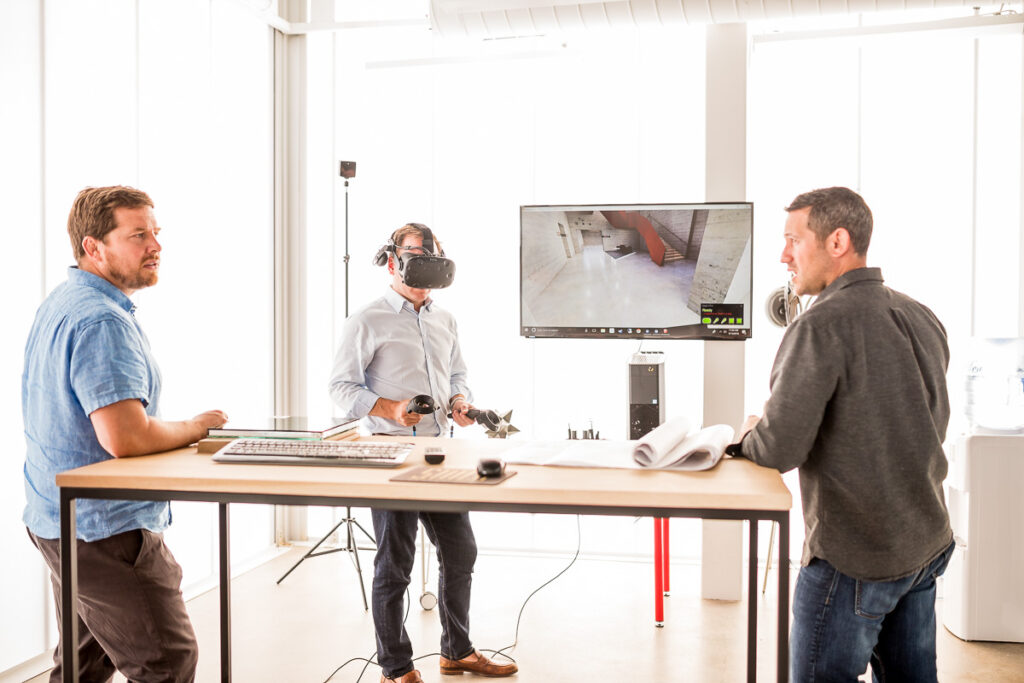
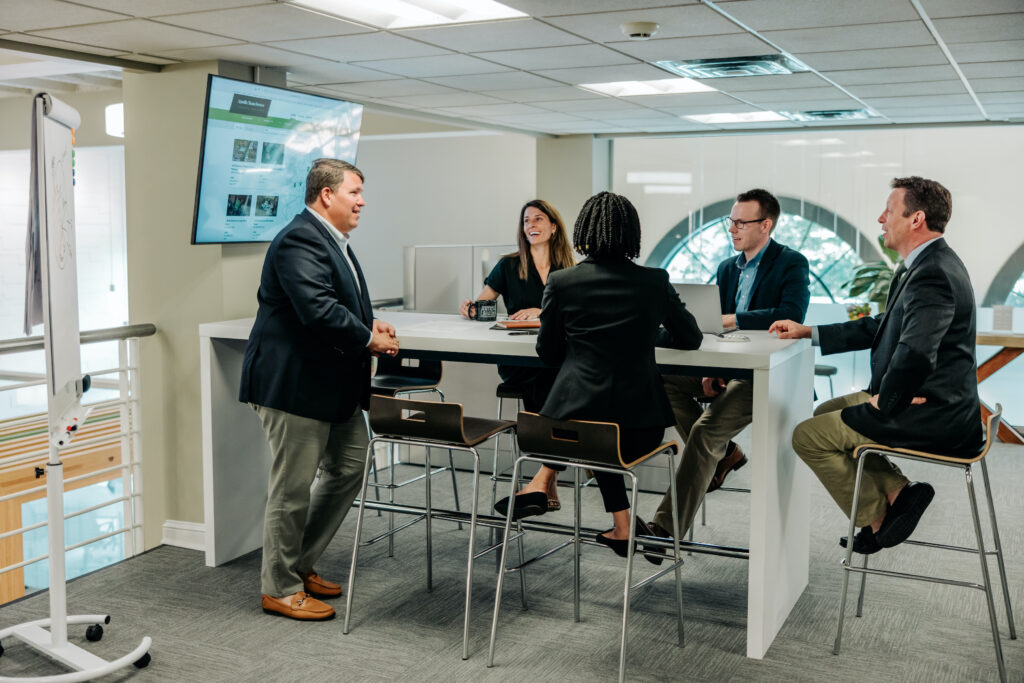
We hope you found these hybrid office space concepts from Steelcase helpful. If you’re interested in seeing them in action, LTP invites you to visit us at our downtown Winston-Salem location. We are happy to host, and we would love to talk with you about any office space needs. To schedule a time to stop by, give us a call at 336-724-1715.
- The Modern Investor’s Toolkit (Even If Real Estate Isn’t Your Day Job)
- Why Company Culture Matters in Real Estate (and Every Industry)
- Why Leasing Strategy Is More Than Just Signing the Deal
- Cap Rates, Co-Tenancy, and Contingencies: A Real Estate Glossary for Operators
- Understanding Rule 506(c): What It Means for Real Estate Investors